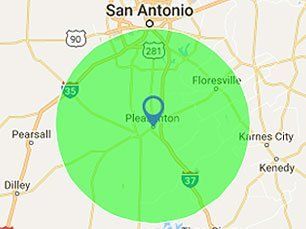Make a Safety Plan
PROTECT YOURSELF IN ANY SITUATION
FOR THOSE IN A VIOLENT DATING RELATIONSHIP
Safety During An Explosive Moment
- If an argument seems unavoidable, try to have it in a room or an area that has access to an exit. Definitely not in a bathroom, kitchen or anywhere near weapons
- Practice how to get out of your house safely
- Identify which doors, windows, elevator or stairwell would be best
- Keep your packed bag ready in an undisclosed but accessible place to leave quickly
- Identify a neighbor you can tell about the violence and ask them to call the police if they hear a disturbance coming from your home
- Devise a code word to use with your children, family, friends and neighbors when you need the police
- Decide and plan a place where you'll go if you have to leave home (even if you don't think you'll need to)
- Use your own instincts and judgment. If the situation is very dangerous, consider giving the abuser what they want to calm them down. You have the right to protect yourself until you are out of danger
- Always remember - You don't deserve to be hit or threatened
- Remember, even if your service is interrupted, calling 911 will reach help. So always keep your phone charged
Safety When Preparing to Leave
- Open a savings account in your own name. This will help you to increase your financial independence
- With someone you trust leave money, an extra set of keys, copies of important documents and extra clothes. This will help when you need to leave quickly.
- Determine who would be able to let you stay with them or lend you some money
- Keep the shelter phone number close to you. Always keep some change or a calling card with you for emergency phone calls
- Review your safety plan as often as possible to plan the safest way to leave your batterer
Safety in Your Own Home
- Change the locks on your doors as soon as possible. Buy extra locks and safety devices to secure your windows
- Discuss a safety plan with your children. Especially when you're not with them
- Decide and inform your kid's school about who'll have the permission to pick up your children
- Inform your neighbors and landlord that your partner no longer lives with you. They should call the police if they see them near your home
Safety With a Protective Order
- Keep your protective order with you at all times. (If you change your purse that should be the first thing that goes in it.)
- Call the police if your partner breaks the protective order
- Always think of alternative ways to keep safe if the police do not respond right away
- Inform your family, friends and neighbors that you have a protective order in effect
Safety on the Job and in Public
- Find a trustworthy colleague with whom you can share your situation. This should include your office or building security. (provide a picture of your batterer if possible)
- Arrange to have someone screen your telephone calls if possible
- Devise a safety plan when you leave your workplace. Have someone escort you to your car, bus or train. Use a variety of routes to go home, if possible. Think about what you would do if something happened while going home (i.e. in your car, on the bus, etc.)
Your Safety and Emotional Health
- If you're thinking of returning to a potentially abusive situation, discuss an alternative plan with someone you trust
- If you have to communicate with your partner, determine the safest way to do so
- Have positive thoughts about yourself and be assertive with others about your needs
- Read books, articles and poems to help you feel stronger
- Find a person to talk freely and openly to get the support you need
- Plan to attend a women's or victim's support group for at least two weeks to gain support from others. This will help you to learn more about yourself and the relationship
Know What to Take When You Leave Your Abuser
Identification Checklist
- Driver's license
- Children's birth certificates
- Your birth certificate
- Social security cards for you and your children
Financial Checklist
- Money and / or credit cards
- Bank books
- Checkbook
Checklist of Legal Papers
- Your protective order
- Lease, rental agreement, house deed
- Car registration and insurance papers
- Health and life insurance papers
- Medical records for you and your children
- Work permits, Green Card and VISA
- Passport
- Divorce papers
- Custody papers
Checklist for Your Children
- School records
Other Checklist Items
- House and car keys
- Medications
- Jewelry
- Address book
- Phone card
- Pictures of you and your children
- Children's small toys
- Toiletries and diapers
- Change of clothes for you and your children




